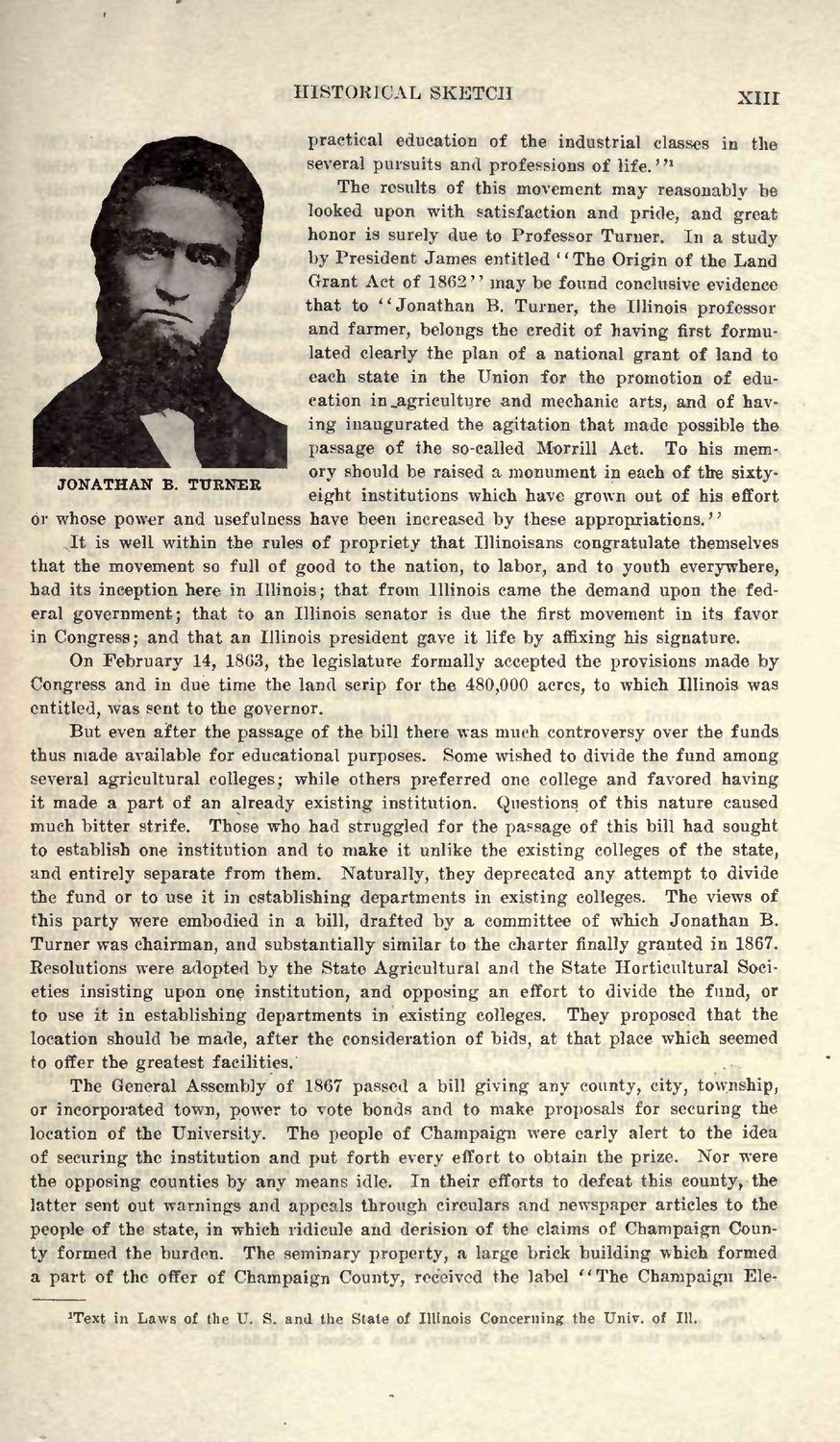| |
| |
Caption: Book - Early History of University (1916)
This is a reduced-resolution page image for fast online browsing.

EXTRACTED TEXT FROM PAGE:
HISTORICAL SKETCH xiir practical education of the industrial classes in the several pursuits and professions of l i f e . ' " The results of this movement may reasonably be looked upon with satisfaction and pride, and great honor is surely due to Professor Turner. In a study by President James entitled ' ' The Origin of the Land Grant Act of 1 8 6 2 " may be found conclusive evidence that to " J o n a t h a n B. Turner, the Illinois professor and farmer, belongs the credit of having first formulated clearly the plan of a national grant of land to each state in the Union for the promotion of education in .agriculture and mechanic arts, and of having inaugurated the agitation that made possible the passage of the so-called Morrill Act. To his memory should be raised a monument in each of tire sixtyeight institutions which have grown out of his effort or whose power and usefulness have been increased by these appropriations." J t is well within the rules of propriety that Illinoisans congratulate themselves that the movement so full of good to the nation, to labor, and to youth everywhere, had its inception here in Illinois; that from Illinois came the demand upon the federal government; that to an Illinois senator is due the first movement in its favor in Congress; and that an Illinois president gave it life by affixing his signature. On February 14, 18G3, the legislature formally accepted the provisions made by Congress and in due time the land scrip for the 480,000 acres, to which Illinois was entitled, was sent to the governor. But even after the passage of the bill there was much controversy over the funds thus made available for educational purposes. Some wished to divide the fund among several agricultural colleges; while others preferred one college and favored having it made a part of an already existing institution. Questions of this nature caused much bitter strife. Those who had struggled for the passage of this bill had sought to establish one institution and to make it unlike the existing colleges of the state, and entirely separate from them. Naturally, they deprecated any attempt to divide the fund or to use it in establishing departments in existing colleges. The views of this party were embodied in a bill, drafted by a committee of which Jonathan B . Turner was chairman, and substantially similar to the charter finally granted in 1867. Resolutions were adopted by the State Agricultural and the State Horticultural Societies insisting upon one institution, and opposing an effort to divide the fund, or to use i t in establishing departments in existing colleges. They proposed that the location should be made, after the consideration of bids, at that place which seemed to offer the greatest facilities.' The General Assembly of 1867 passed a bill giving any county, city, township, or incorporated town, power to vote bonds and to make proposals for securing the location of the University. The people of Champaign were early alert to the idea of securing the institution and put forth every effort to obtain the prize. Nor were the opposing counties by any means idle. In their efforts to defeat this county, the latter sent out warnings and appeals through circulars and newspaper articles to the people of the state, in which ridicule and derision of the claims of Champaign County formed the burden. The seminary property, a large brick building which formed a part of the offer of Champaign County, received the label " T h e Champaign Ele*Text in Laws of the TJ. S. and the State of Illinois Concerning the Univ. of 111.
| |